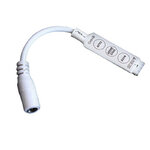Johanx2
Advanced Member level 4

Absolutely correct! You can get *correct* stereophonic effect only at one *correct* position of the speakers and the listener. Fortunately the recording standards are more or less standard (few follows it) but the playback is yours and you only decide.
The original was probably recorded on several microphones, sometimes more than six, mixed by another engineer and finally recorded as L+R and L-R signals on a file. You are anyway hearing what they want you to hear. If you think that you are hearing what you would have been hearing if you were in the middle row in the theatre then you are very likely mistaken.
I find this all this more for movie audio system, I dont care too much when listening music, anyway with what I did here, the sound will flow in two different directions, giving interesting stereo sound, anyway I did not place the voice drivers as (west-east, that would be even something more separated but I think no better, 45 degre I think is the maximum tolerance to have a good stereo audio.
- - - Updated - - -
Hey audioguro, I was thinking bad, and that 8" pyle subwoofer has double coil, which each one is 4 ohms, so if I connect it parallely, I would be able to get that highest amplified value for subwoofer (100w), which is not bad because what I set my bass volumen at 90%, will I still have the 10% distortion? dnot know how bad can 10% distorion sounds, but I think its a little and only audiophiles can complaint about it? is that so bad quality getting near to those 100w where distortion is? I think I will connect it at 2 ohms, no matter the distortion, and as I said, maybe its not noticiable keeping some distance to 100w, and having about 95% for example, which will be more that the subwoofer set at 4ohm. Also 4 ohms the little speakers are rated at 200w, surely 50w will sound mo re than enoought for me, and what reliefe if subwoofer can deliver a lot more so it also performs good movements. As I said, its a shame my shippings has a delay, probably will I get it in about one more week. Surely the heat sinks will heat if subwoofer setted at 2 ohms, but can add bigger heat stinks or a little fan.





